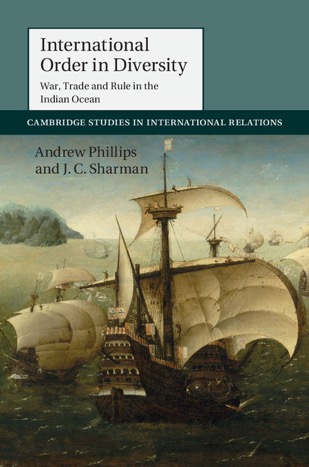
International Order in Diversity: War, Trade and Rule of the Indian Ocean. By Andrew Phillips and JC Sharman. Cambridge University Press, St Ives, 2015.
Reviewed by Alastair Cooper
THIS is a very good book. It is also one that ANI members might never read. In fact, this reviewer will bet his second copy of Andrew Lambert’s The Admirals, that no ANI member will have a copy on their shelves, let alone have contemplated reading the book.
That is a great shame, both for those of us who consider themselves to be professional naval officers and for those of us who have academic pretentions.
Yes, this book is based on some fairly esoteric international relations theory, which an ANI member might be forgiven for passing by. Yet most ANI members would also be happy to quote Geoffrey Till’s trilogy of naval roles: warfighting, constabulary and diplomatic.
As naval professionals we are quite happy to delve into warfighting and deign to discuss maritime security, but beyond painting orphanages, holding cocktail parties and decrying the lack of understanding of a navy’s diplomatic roles, how many naval officers have engaged with the theory and practice of international relations? How many have sought to integrate naval doctrine and practice with that of our diplomatic and commercial counterparts? I suspect the answer is precious few.
It is much easier to find fault in others than to look at oneself. The truth is we have a role to play in Australia’s diplomatic effort and part of that is adopting a much more outgoing approach to the value proposition that navies and maritime forces provide. I will stand to be corrected, but there are no naval scholars acknowledged in this book, yet it deals with the history of the Indian Ocean and the nations, principalities, empires and companies which have crossed it, used it and surrounded it.
The Royal Australian Navy is chair of the Indian Ocean Naval symposium, yet we have not made much effort to understand the history, not just the last few years, but the deep, rich and diverse history of the region. That is something which we all, this reviewer included, should see as an opportunity for improvement: Alfred Thayer Mahan and Julian Corbett did not come to their understanding of naval theories from studying events in their lifetimes. Yes, it covers a period of history several hundred years ago (1500-1750) but it was a period when the Indian Ocean was busy, changing and contested, when maritime and commercial power were used and developed. There is much in this that is applicable to our current circumstances, and not just in the Indian Ocean.
So take the time to read this book; it is worth the effort. If it is hard, treat it like spherical trigonometry or Fourier transforms or non-public funds: struggle through, skip the really theoretical bits and, if necessary, fake it until you make it. It is well written by two Australian scholars who should be invited to a conference or symposium to talk about what they have learnt about the interaction of international relations, commerce and the Indian Ocean the Royal Australian Navy has spent so much time, effort and blood traversing.
At US$28.00 for the epub version, $34.99 in softcover and $99.00 in hardback, there is a good range of reasonably valued options, although the lack of an Australian online store for the publisher allowing purchases in Australian dollars remains a prominent, if relatively minor, irritant. This reviewer read the epub version on laptop and found it a reasonable way to enjoy International Order in Diversity: War, Trade and Rule of the Indian Ocean, although smaller e-reading devices would struggle if the format does not adjust.
Overall, highly recommended, take the challenge.



